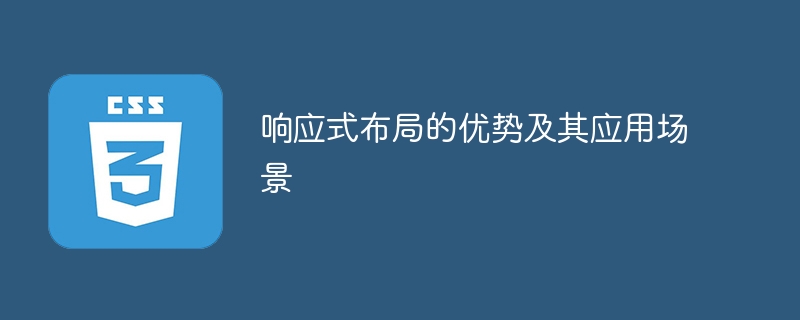

The advantages of responsive layout and its application scenarios
With the popularity and diversification of mobile devices, the way people access websites has also changed. In order to adapt to devices with different screen sizes and resolutions, responsive layout (Responsive Design) has become a very important design and development technology. This article will explore the advantages of responsive layout and its practical application scenarios, and provide relevant code examples.
1. Advantages of responsive layout
2. Application scenarios of responsive layout
3. Implementation example of responsive layout
The following is a simple example of responsive layout, implemented using HTML and CSS:
<!DOCTYPE html>
<html>
<head>
<style>
.container {
width: 100%;
max-width: 960px;
margin: 0 auto;
padding: 20px;
}
.column {
width: 100%;
float: left;
}
@media (min-width: 768px) {
.column {
width: 50%;
}
}
@media (min-width: 1200px) {
.column {
width: 33.33%;
}
}
</style>
</head>
<body>
<div class="container">
<div class="column">
<h2>Column 1</h2>
<p>Lorem ipsum dolor sit amet, consectetur adipiscing elit.</p>
</div>
<div class="column">
<h2>Column 2</h2>
<p>Lorem ipsum dolor sit amet, consectetur adipiscing elit.</p>
</div>
<div class="column">
<h2>Column 3</h2>
<p>Lorem ipsum dolor sit amet, consectetur adipiscing elit.</p>
</div>
</div>
</body>
</html>In the above example , we used the @media rule of CSS to implement responsive layout. Depending on the width of the device, different media query conditions will trigger different CSS styles to achieve adaptive changes in layout.
Summary:
Responsive layout is an important design and development technology that allows the website to display normally on different devices and provide a good user experience. Business websites, news media websites, personal blogs, etc. are all suitable for responsive layout. Through the sample code, we can see how to use the @media rule of CSS to achieve responsive layout. I hope this article helps you understand and apply responsive layout.
The above is the detailed content of Advantages and scope of application of responsive layout. For more information, please follow other related articles on the PHP Chinese website!




